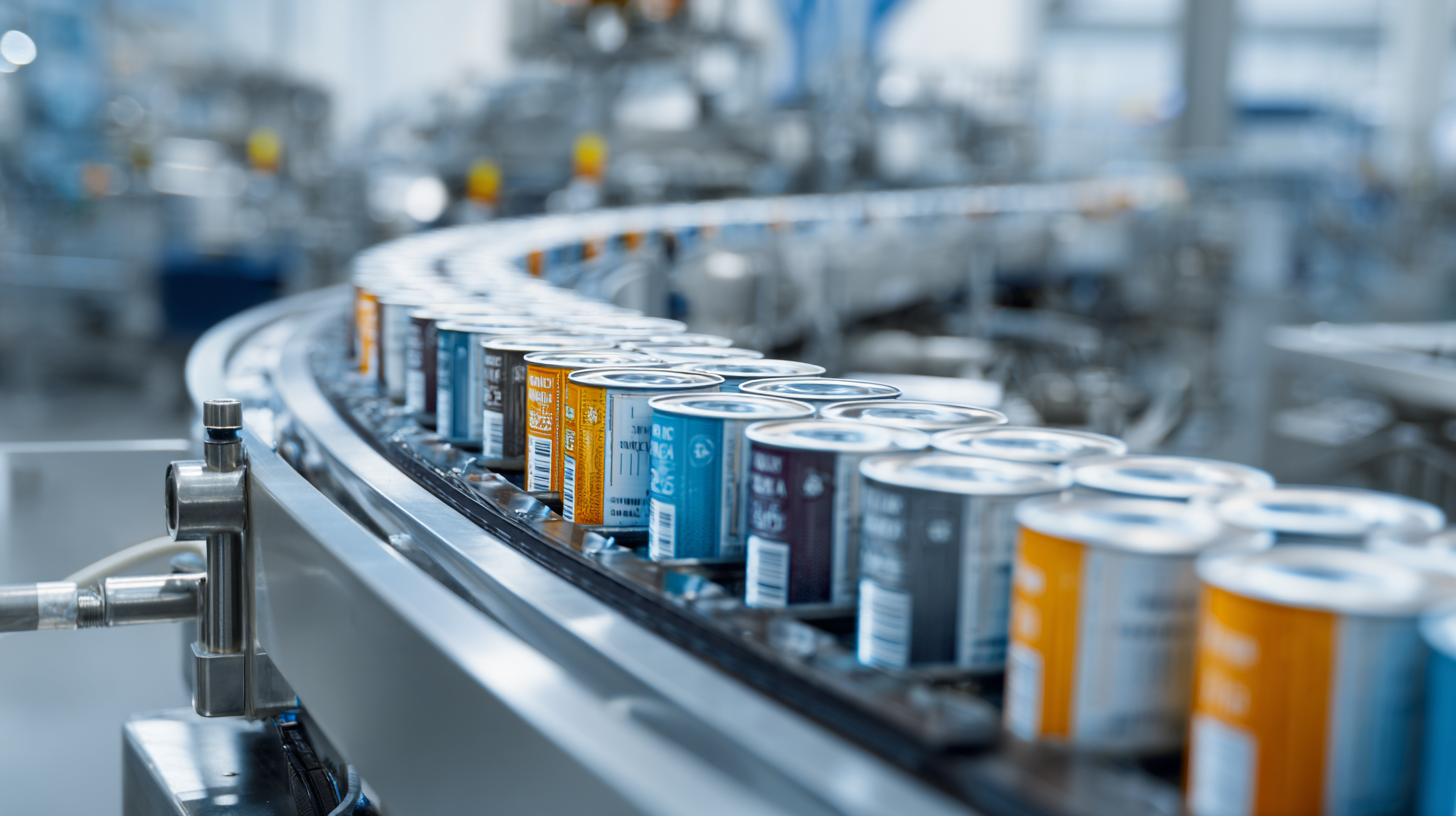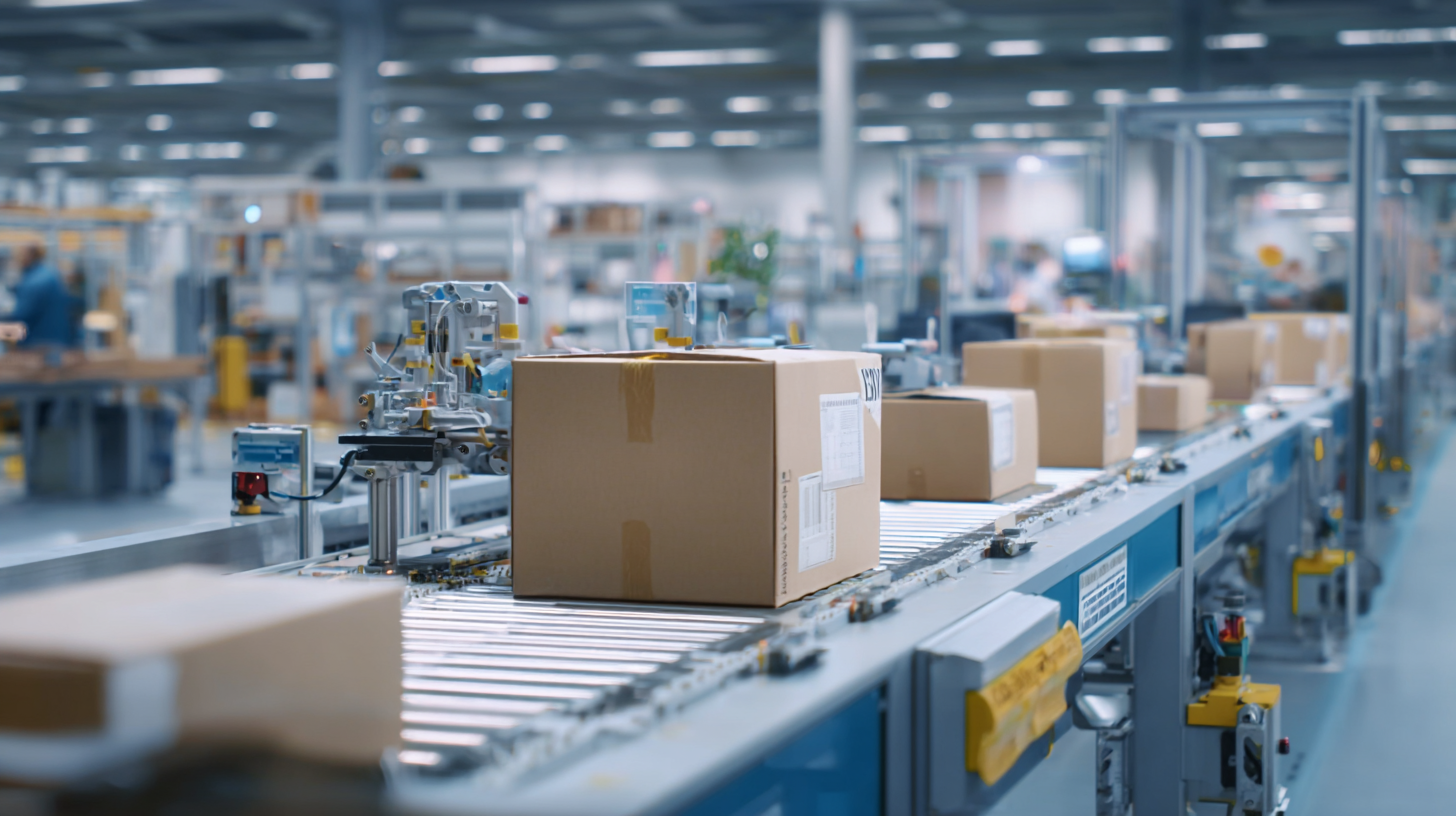Exploring Innovative Alternatives to the Best Shrink Labels for Global Procurement Needs
As the global packaging market continues to expand, the demand for innovative solutions in product labeling is more crucial than ever. According to the latest report from Smithers Pira, the shrink label market is projected to grow at a CAGR of 4.6% through 2026, underscoring the increasing reliance on shrink labels for branding and functionality. These labels not only offer aesthetic appeal but also enhance product safety and tamper evidence, which are vital in today’s competitive landscape. "中国智造,全球热销,品质保证" reflects the emerging trend of Chinese manufacturing meeting global procurement needs, emphasizing the importance of quality and innovation. This blog will explore various innovative alternatives to traditional shrink labels, considering factors such as sustainability, cost-effectiveness, and compliance with international standards, to provide insights for businesses looking to optimize their labeling solutions.
Innovative Labeling Solutions for Global Procurement Challenges
In today’s fast-paced global market, procurement professionals face unique challenges that require innovative solutions. Labeling is an essential aspect of logistics and inventory management, and the demand for reliable shrink labels has grown significantly. However, the quest for efficiency and sustainability has led many businesses to explore alternative labeling options that fulfill their global procurement needs while addressing environmental concerns.

One such alternative is the use of digital labeling technologies, which allow for customization at an unprecedented scale. These solutions not only reduce material waste but also enable real-time updates, ensuring that labels reflect the most current information without the need for reprinting. Additionally, biodegradable and recyclable materials are gaining traction, aligning procurement practices with corporate sustainability goals. These innovations not only meet regulatory requirements but also convey a commitment to eco-friendly practices, positively impacting brand reputation and consumer trust.
As companies navigate the complexities of international supply chains, the shift towards innovative labeling solutions proves to be beneficial. Adopting advanced labeling technologies and sustainable materials can enhance operational efficiency and foster stronger relationships with suppliers and customers alike. Ultimately, embracing these alternatives can pave the way for a more resilient and responsible procurement strategy in an ever-evolving marketplace.
Evaluating the Effectiveness of Shrink Labels in Diverse Industries
Shrink labels play a crucial role in various industries, offering solutions for product identification, branding, and security. A recent report by Smithers Pira revealed that the global shrink sleeve label market is projected to grow at a CAGR of 4.7%, reaching $5.3 billion by 2025. This growth is driven by the rising demand for packaging that provides a tamper-evident solution, particularly in the food and beverage sector, where safety and compliance are paramount. The ability of shrink labels to conform to complex package shapes not only enhances aesthetics but also improves functionality, making them an essential component in modern packaging design.
In the pharmaceuticals industry, effective labeling is critical for adherence to regulations. The International Pharmaceutical Regulatory Association indicates that over 40% of product recalls are due to labeling errors. Employing high-quality shrink labels ensures clear communication of dosage and usage instructions, facilitating patient safety. Moreover, advanced printing technologies allow for the incorporation of QR codes and other digital elements, enhancing traceability and consumer engagement. By evaluating the effectiveness of shrink labels across these diverse applications, businesses can better align their packaging strategies with industry standards and consumer expectations, ultimately driving operational efficiency and brand loyalty.
Effectiveness of Shrink Labels Across Different Industries
Sustainable Alternatives: Eco-Friendly Shrink Label Materials
As global concern for environmental sustainability grows, the demand for eco-friendly alternatives in packaging solutions, particularly shrink labels, has become increasingly important. According to a report by Smithers Pira, the global sustainable packaging market is expected to reach $500 billion by 2027, highlighting a significant shift towards environmentally responsible materials. This trend is not only driven by regulatory pressures but also by consumer preferences that increasingly favor brands committing to sustainable practices.
Innovative alternatives to traditional PVC shrink labels are gaining traction, with materials such as PLA (polylactic acid) and recycled PET (rPET) emerging as viable options. A study conducted by the Biodegradable Products Institute found that PLA can reduce the carbon footprint by up to 68% compared to conventional plastics, making it an attractive solution for manufacturers looking to enhance their sustainability profile. Additionally, rPET, which is made from post-consumer plastic waste, appeals to brands looking to close the loop in their supply chains. As organizations prioritize eco-friendly procurement, these innovative materials not only meet functional requirements but also align with broader sustainability goals, ultimately contributing to a healthier planet.
Exploring Innovative Alternatives to the Best Shrink Labels for Global Procurement Needs - Sustainable Alternatives: Eco-Friendly Shrink Label Materials
| Material Type |
Recyclability |
Biodegradability |
Usage Applications |
Environmental Impact Score (1-10) |
| PLA (Polylactic Acid) |
Yes |
Yes |
Food packaging, beverages |
8 |
| Bio-based PET (Polyethylene Terephthalate) |
Yes |
Partial |
Bottles, containers |
7 |
| Recycled PVC |
Yes |
No |
Labeling, packaging |
5 |
| Paper-based Labels |
Yes |
Yes |
Gift packaging, retail |
9 |
| Mushroom-based Material |
Yes |
Yes |
Packaging, insulation |
10 |
Customization Trends: Tailoring Shrink Labels for Unique Markets
In today's dynamic market, customization has become a pivotal trend in the production of shrink labels, catering to diverse consumer needs and preferences. According to a recent report by Smithers Pira, the global shrink sleeve market is expected to reach $5.4 billion by 2027, spurred by demand for personalized packaging solutions. Brands are increasingly recognizing that tailored shrink labels can enhance product visibility and consumer engagement, particularly in niche markets where standard solutions fall short.

As various industries, including food and beverage, pharmaceuticals, and cosmetics, push for unique branding strategies, the customization of shrink labels plays a crucial role. A 2022 survey by the Packaging Association revealed that 67% of consumers tend to choose products with eye-catching and personalized packaging. This demonstrates that businesses that invest in innovative label design not only meet the specific demands of their markets but also drive higher sales and customer loyalty. The evolution towards customization in shrink labels is reshaping procurement strategies, encouraging companies to adopt more flexible and creative approaches to packaging.
Future-Proofing Procurement: The Role of Technology in Label Production
In the rapidly evolving landscape of procurement, technology plays a pivotal role in modernizing label production, particularly in the implementation of advanced solutions like
RFID and data analytics. The 2022 report on the ultra-high-frequency RFID industry in China highlights a significant
growth trajectory, projecting substantial market sizes and a competitive landscape driven by the adoption of innovative labeling systems. Integrating RFID technology enables businesses to enhance
supply chain visibility and accuracy, addressing the challenges posed by traditional label solutions.
Furthermore, the ongoing reliance on big data for optimizing supply chain strategies cannot be overstated. As enterprises produce and manage
vast amounts of data, the need for robust analytical tools becomes imperative. The 2020 Digital Management Research Report indicates that traditional data processing applications are ill-equipped to
handle this influx of information. By leveraging cutting-edge technologies, organizations can not only streamline their procurement processes but also mitigate risks associated with
inefficient label management.
As the market landscape continues to evolve, future-proofing procurement through technology will be essential. Implementing sophisticated label production methods and harnessing the power of
data analytics ensures that businesses remain competitive while meeting the growing demands of their global procurement needs.